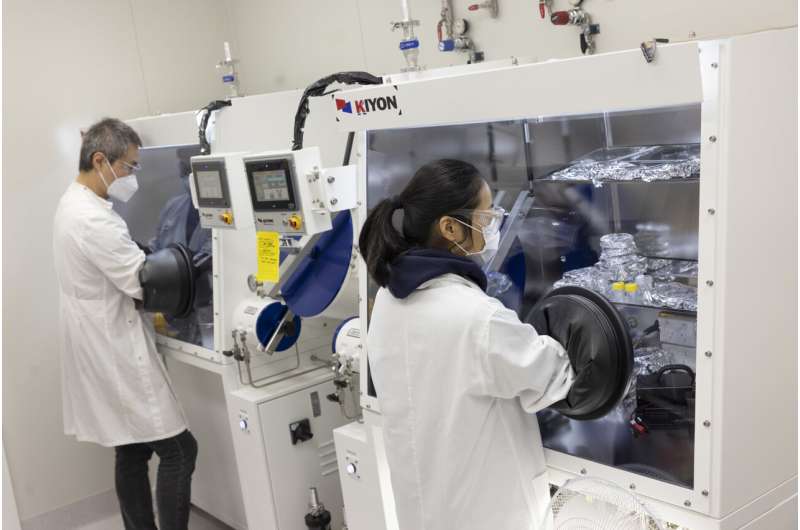Luminous laminated glass. Credit: The University of Queensland
Cracked phone displays could be a thing of the past thanks to groundbreaking research at the University of Queensland.
The global research team led by Dr. UQ’s Jingwei Hou, Professor Lianzhou Wang and Professor Vicki Chen pioneered the technology to make next-generation laminated glass for lighting LEDs and smartphones, televisions and computer screens.
The results will enable the manufacture of glass screens that are not only unbreakable but also provide crystal clear picture quality.
Dr. Hou said the discovery marks a huge advance in perovskite nanocrystal technology, as researchers have previously only been able to create this technology in the bone-dry atmosphere of a laboratory setting.
“The emitting materials consist of nanocrystals called lead halide perovskites,” he said.
“They can harvest sunlight and convert it into renewable electricity – which is crucial in low-cost, high-efficiency new generation solar cells and many promising applications such as lighting.
“Unfortunately, these nanocrystals are extremely sensitive to light, heat, air and water – even water vapor in our air would kill the current devices within minutes.

Performance comparison of laminated glass in dry room facilities at the Australian Institute for Bioengineering and Nantechnology (AIBN) at the University of Queensland. Credit: The University of Queensland
“Our team of chemical engineers and materials scientists has developed a process to wrap or bind the nanocrystals in porous glass.
“This process is the key to stabilizing the materials, increasing their efficiency and preventing the toxic lead ions from being washed out of the materials.”
Dr. Hou said the technology is scalable and opens the door to many uses.
“Currently, QLED or quantum dot light-emitting diode screens are considered the top performers for imaging and performance,” he said.
“This research will allow us to improve this nanocrystal technology by delivering stunning image quality and strength.”
Professor Vicky Chen said it was an exciting development.
“Not only can we make these nanocrystals more robust, but we can match their optoelectronic properties with fantastic light emission efficiency and highly desirable white light LEDs,” said Professor Chen.
“This discovery opens a new generation of nanocrystal-glass composites for energy conversion and catalysis.”
The results were published in the journal Science.
This research is a collaboration between UQ, the University of Leeds, Université Paris-Saclay and the University of Cambridge.
Researchers report crucial discovery of nanomaterials for LEDs
More information:
Jingwei Hou et al., Liquid Phase Sintering of Lead Halide Perovskites and Organometallic Framework Glasses, Science (2021). DOI: 10.1126 / science.abf4460 Provided by the University of Queensland
Quote: Unlocking Technology to Make Unbreakable Screens (2021, October 28), accessed October 28, 2021 from https://phys.org/news/2021-10-technology-unbreakable-screens.html
This document is subject to copyright. Except for fair trade for private study or research purposes, no part may be reproduced without written permission. The content is provided for informational purposes only.

